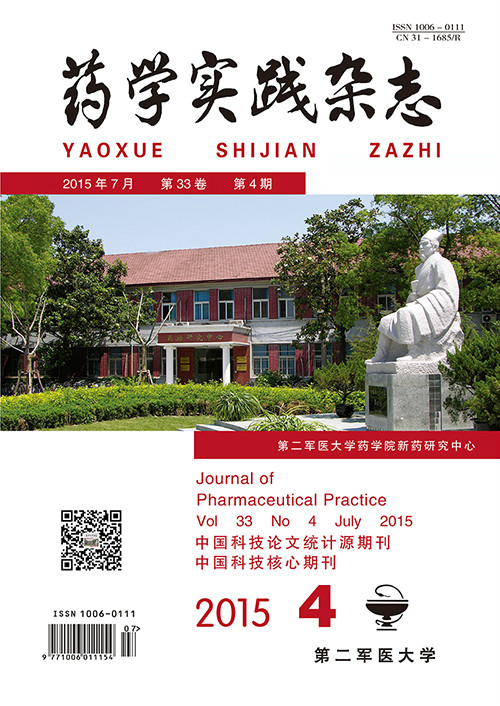TANG Yuenian, JIN Liang, SUN Chaorong. Olaparib: a new drug for hereditary ovarian cancer treatment[J]. Journal of Pharmaceutical Practice and Service, 2015, 33(4): 373-375. doi: 10.3969/j.issn.1006-0111.2015.04.022
| Citation:
|
TANG Yuenian, JIN Liang, SUN Chaorong. Olaparib: a new drug for hereditary ovarian cancer treatment[J]. Journal of Pharmaceutical Practice and Service, 2015, 33(4): 373-375. doi: 10.3969/j.issn.1006-0111.2015.04.022
|
Olaparib: a new drug for hereditary ovarian cancer treatment
-
Department of Pharmacy, Xinhua Hospital, Sechool of Medicine, Shanghai Jiaotong University, Shanghai 200092
- Received Date: 2015-02-02
- Rev Recd Date:
2015-04-29
-
Abstract
Olaparib is an inhibitor of poly (ADP-ribose) polymerase (PARP) enzymes, and was developed by AstraZeneca Pharmaceuticals LP. Olaparib has therapeutic potential for treating cancers associated with impaired DNA repair capabilities, particularly those with deficiencies in the homologous recombination repair (HRR) pathway. Olaparib is an available therapy option for ovarian cancer patients with deficiencies in the BRCA1 and BRCA2 genes. Olaparib can selectively kill cancer cells without compromising normal cells. Compared to traditional chemotherapy means, adverse reactions are much smaller.
-
References
|
[1]
|
FDA. LYNPARZA[EB/OL].[2014-12-19](2015-02-02).http://www.accessdata.fda.gov/drugsatfda_docs/label/2014/206162lbl. pdf. |
|
[2]
|
Althaus FR,Richter C. ADP-ribosylation of proteins: enzymology and biological significance[J].Mol Biol Biochem Biophys,1987,37(1):1-237. |
|
[3]
|
Domchek SM,Weber BL.Clinical management of BRCA1 and BRCA2 mutation carriers[J]. Oncogene, 2006, 25(43):5825-5831. |
|
[4]
|
Moynahan ME,Chiu JW, Koller BH, et al. BRCA1 controls homology-directed DNA repair[J]. Mol Cell, 1999,4(4):511-518. |
|
[5]
|
Tutt A, Bertwistle D, Valentine J, et al. Mutation in BRCA2 stimulates crror-prone homology-directed repair of DNA double-strand breaks occurring between repeated sequenced[J]. EMBO J,2001,20(17):4704-4716. |
|
[6]
|
Farmer H, McCabe N, Lord CJ, et al. Targeting the DNA repair defect in BRCA mutant cells as a therapeutic strategy[J]. Nature, 2005, 434(7035):917-921. |
|
[7]
|
Bundred N, Gardovskis J, Jaskiewicz J,et al. Evaluation of the pharmacodynamics and pharmacokinetics of the PARP inhibitor olaparib: a phase I multicentre trial in patients scheduled for elective breast cancer surgery[J]. Invest New Drugs, 2013, 31 (4): 949-958, |
|
[8]
|
Norris RE, Adamson PC, Nguyen VT,et al. Preclinical evaluation of the PARP inhibitor, olaparib, in combination with cytotoxic chemotherapy in pediatric solid tumors[J]. Pediatr Blood Cancer, 2014 61 (1): 145-150. |
|
[9]
|
Sakai W, Swisher EM, Jacquemont C, et al. Functional restration of BRCA2 protein by secondary BRCA2-mutantedovarian carcinoma[J]. Cancer Res, 2009, 69(16):6381-6386. |
|
[10]
|
Gilabert M, Launay S, Ginestier C, et al. Poly(ADP-ribose) polymerase 1 (PARP1) overexpression in human breast cancer stem cells and resistance to olaparib[J]. PLoS One, 2014,9 (8): e104302. |
-
-
Proportional views

-







 DownLoad:
DownLoad: